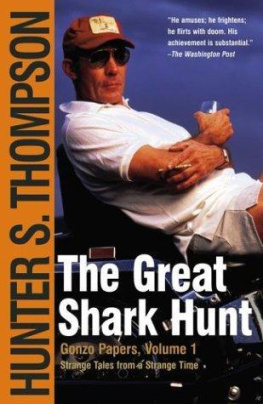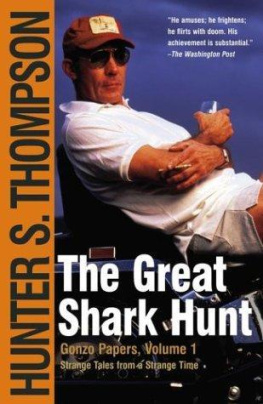Published by The History Press
Charleston, SC
www.historypress.com
Copyright 2019 by Julie A. Thompson
All rights reserved
First published 2019
E-book edition 2019
ISBN 978.1.43966.665.4
Library of Congress Control Number: 2018966266
print edition ISBN 978.1.46713.820.8
Notice: The information in this book is true and complete to the best of our knowledge. It is offered without guarantee on the part of the author or The History Press. The author and The History Press disclaim all liability in connection with the use of this book.
All rights reserved. No part of this book may be reproduced or transmitted in any form whatsoever without prior written permission from the publisher except in the case of brief quotations embodied in critical articles and reviews.
This first published work of mine is dedicated to veteran FBI agent Larry Wack, as well as to my loving mother, Marilyn Kepler, and all those who heroically wage war against cancer.
This book was produced with my heart and thoughts guided by my beautiful daughter, Brittany A. Thompson, who continues to remind me of what being human really meansto live, create, dream and progress.
Alvin Karpis and J. Edgar Hoover, black-and-white illustration, 2018. Willie WD Smith, Tennessee.
The THIEF: Cops are cops! Im sick and tired of everybody goin green and startin to shake when you talk about G-men. Fedswhat are they, some sort ofspecial creature? Sure they got the heat on me, but they havent got me!
Alvin Karpis
TheJUSTICE: The cure for crime is not the electric chair, but the high chair
J. Edgar Hoover
Per veteran FBI agent Larry Wack, in an e-mail dated March 6, 2018:
Dear Sir:
Is it true that you walked up to Alvin Karpis in the street and arrested him[?] I thought only agents arrest people.
Thank you, Larry Wack
I wanted to be a G-Man since the age of 13. At that age, and for years on and off, I used to write letters to JEH and the Bureau with all kinds of stupid questions about the gangster era and probably became a pain in the ass to them! Funny enough, I found a copy of my letter [above] to JEH in 1964 at the age of 14, pertaining to Karpis.
This letter was in the Karpis file when I came across it. Dont recall the Bureaus response or if they even responded at all. I was growing up in Willingboro, New Jersey, at the time.
FOREWORD
As students of U.S. PenitentiaryAlcatraz history, the path to a true understanding of the infamous prison leads directly to an exploration of the notorious gangster era in America. The study of this history also lends itself to the discovery of key figures who exemplified this dangerous period.
The governments response to this threat would result in a federal crackdown on organized crime, and it would also lead to the creation of Americas first super-maximum security prison on Alcatraz Island in the San Francisco Bay. Any exploration of either the gangster era or the USPAlcatraz will surely include the true-life story of a colorful yet sometimes deadly individual who dominated both the era and the inescapable federal prison. Alvin Creepy Karpis was this dangerous decades final Public Enemy No. 1. He would ultimately serve the longest sentence ever served at USPAlcatraz.
The following literary work clarifies the social structure of American culture during the late 1920s and early 1930s that gave rise to the emergence of timeless criminal folk heroes such as Al Scarface Capone, John Dillinger and the subject of this study, Alvin Karpiskidnapper, bank robber, criminal mastermind, supposed murderer and fugitive extraordinaire.
This is a compelling story of daring criminal conspiracies, the periods public perception of lawlessness and the creation of the Federal Bureau of Investigation (FBI) and its perennial leader, J. Edgar Hoover. This work traces the emergence of this extremely cagey federal fugitive, his elusive path as leader of the Karpis-Barker Gang, his eventual capture and extreme incarcerations and better years after release from a life sentence.
The author of this close examination of this gangster-era icon, devoted historian Julie Thompson, has her roots firmly planted in northeastern Ohio. Julie, having been raised in the usually hushed village of Garrettsville, illuminates the importance of this unsuspecting setting for a brazen great train robbery with a never-before-attempted escape by airplane. Julie brings to light the mechanics of the gangster eras progression, illuminating the local histories of numerous American breadbasket Midwest states. The result had lasting national implications. Criminal associations included fellow infamous outlaws like George Bugsy Moran, George Baby Face Nelson, Kate Ma Barker and her boys (originally the Barker-Karpis Gang) and other nefarious connections made through these contacts.
Many of the Karpis-Barker Gangs crimes and hideouts inhabited many cities within Ohio, including Cleveland, Akron, the Canton area, Toledo and even down south in the secluded criminal hangout of Hot Springs, Arkansas.
New and gripping details emerge through this exploration on the planning and execution of Alvin Karpiss sensational federal crimes. Many titillating stories will enthrall readers featuring the roles of tommy guns, dynamite and creative getaway vehicles. Planes, trains and automobiles often played lively roles in Alvins crimes, which makes this a worthwhile immersion into the daring details of these often-wild escapades.
Alvin Karpis was ultimately sentenced to a term of life in federal prison for his felonious kidnapping capers. Consequently, this life sentence imprisoned Karpis at Alcatraz for a record-setting twenty-six years (nearly), and he endured time on the Rock during all three decades of the institutions history.
Surprisingly, USPAlcatraz was never at full capacity during its twenty-nine-year history. The U.S. Army had expanded the military prison to six hundred cells during the year 1912. When the Feds took over in 1934, they were never able to fill the prison. There just werent enough worst of the worst criminals deserving of this level of containment or punishment.
Alvin Karpis was not one of these undeserving occupants. USPAlcatraz had been extensively remodeled by the Bureau of Prisons from 1933 to 1934 with the goal of securely confining the gangster-criminal element of Karpiss kind. Alcatraz was designed to receive Americas most dangerous who were now destined to serve long sentences in the new escape-proof federal prison.
In 1935, the drawn-out hunt for Karpis as a federal fugitive, spearheaded by Hoover and company, had been a constant source of embarrassment for the newly designated Federal Bureau of Investigation. As the top G-Man (or Government Man), Director J. Edgar Hoover was especially the target of criticism. The desperate and prolonged hunt for Karpis evolved into a source for exaggerated newspaper coverage and sensationalized pulp fiction.


















